The prospects of success are strongly influenced (apart from local weather- und seeing conditions) by your geographical latitude and the season.
First we take a look on the conditions at my home laditude in the course of the year. The following illustration shows the number of objects not to be seen (bargraph) as well as the "quality" of the Messier marathon (line). The "quality" is a measure of the local circumstances of the marathon. A theoretical 100% value would mean, that each of the 110 Messier objects could be observed at full darkness during it's transit at sufficient hight above the horizon.
You may recognize two periods of time well suited for a marathon:
(1) end of February to end of March
(2) end of October, with only missing a few Messier objects
The quality of the autumn-marathon at 50°N is 55% and less favorable than
the quality of the classic marathon in spring time (67%). The lower value
means a) fewer objects are visible and b) more objects are closer to the
horizon or can only be seen during dusk or dawn.

Diagramm 1: Variation of missing objects and the
"quality" during the course of the year at 50° northern latitude
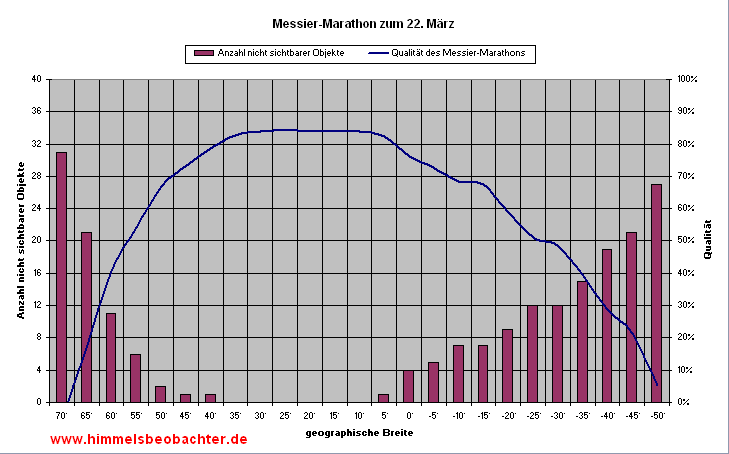
Diagramm 2: Variation of missing objects and the "quality" with the geographical latitude at March 22
Critical objects visible only at dusk or dawn
During springtime in mid-northern latitudes the length of the day increases about four minutes a day. In combination with the shorter siderial day we have a 6 minutes a day less time for objects visible at dusk. In the morning sky both effects the two effects substract from each other resulting in only 2 minutes gain for objects rising.
Within a week the prospects in the morning sky dont change much, but have a big influence on the appearance of the evening sky. Objects like the galaxies M77 and M74 may become invisible within days. The next four diagrams show the critical objects of the evening resp. morning sky in the cource of several weeks at 50° N and at 40° N respectively. I concider the end of the nautical twilight as start or the start of nautical twilight as the end of the observing session, as there is no need to run all marathon between end and start ofthe astronomical twilight.
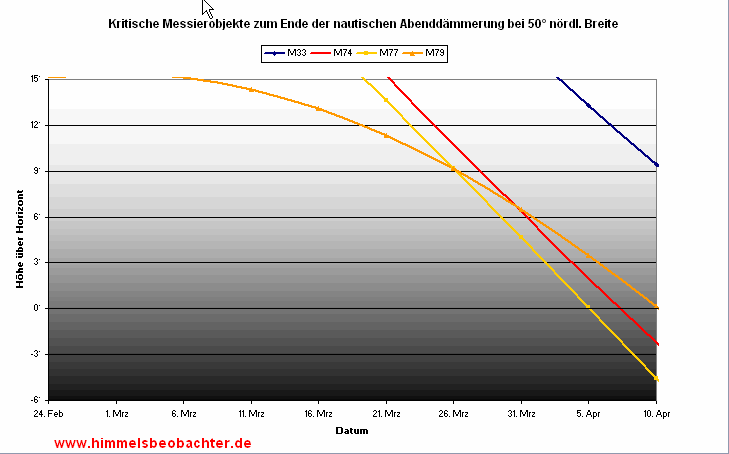
Diagram 3: Visibility of the critical objects in the evening sky at 50° N
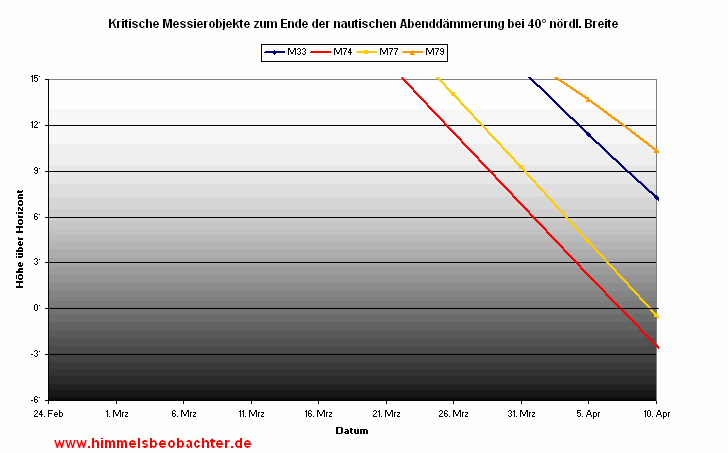
Diagram 4: Visibility of the critical objects in the evening sky at 40° N
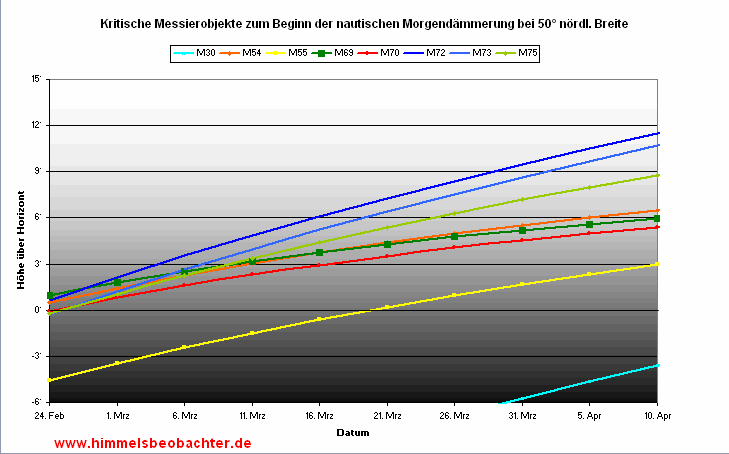
Diagramm 5: Visibility of the critical objects in the morning sky at 50° N
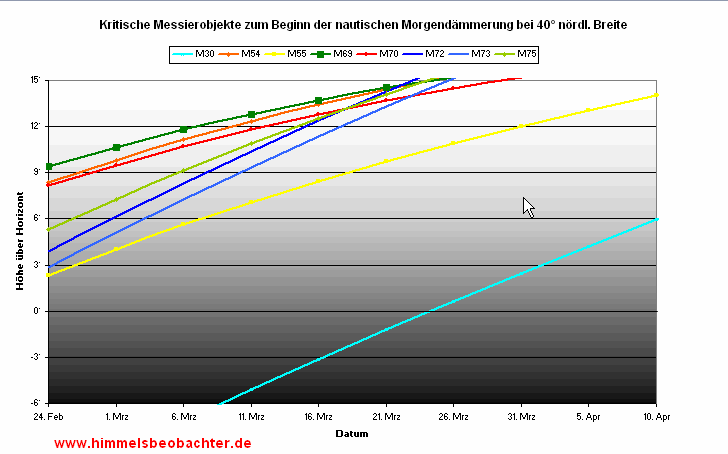
Diagramm 6: Visibility of the critical objects in the morning sky at 40° N